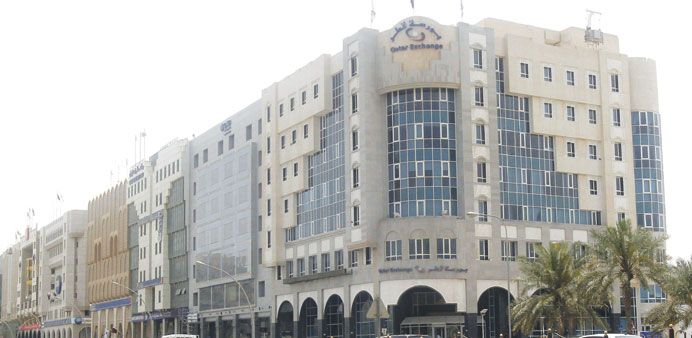Bloomberg/Doha
Qatar may find it difficult to win a credit rating upgrade in the next two years unless the nation reduces its reliance on public spending, Standard & Poor’s said after the government said it deserves AAA status.
Qatar’s “limited monetary flexibility, and its banks’ increasing dependence on external financing” stand in the way of raising the rating from AA, the third-highest investment grade, S&P sovereign analyst Trevor Cullinan said in an e-mailed response to questions on Monday.
Qatar, which pegs its currency to the US dollar, relies on revenue from gas and oil exports to fuel the economy. The government plans to spend $140bn on infrastructure projects by 2019, three years before the country hosts the soccer World Cup finals, Finance Minister HE Yousef Hussein Kamal said in Doha on Monday. “We are working on AAA instead of AA,” Kamal told reporters. “Our strength deserves AAA.”
A two-level upgrade to AAA would put the world’s largest exporter of liquefied natural gas on the same level as countries including Norway, the world’s eighth largest oil exporter. The cost of insuring Qatar’s dollar-denominated debt has declined 19 basis points, or 0.19 percentage point, this year to 63 on Monday, according to data compiled by Bloomberg. That has narrowed the gap with Norway’s credit default swaps to 44 basis points, the lowest since 2008, the data show.
Qatar’s plan comes at a time when the global economic slowdown and Europe’s debt crisis is costing some advanced nations from the US to Spain their top ratings. This makes it “quite challenging for Qatar to convince the rating agencies for a AAA rating,” Apostolos Bantis, a credit analyst at Commerzbank in London, said by e-mail on Monday.
The net external liabilities of Qatar’s banks surged to 97bn riyals in December 2012 from 43bn riyals a year earlier, S&P said, citing central bank data. Qatari banks also raised $3.8bn from the bond market last year, compared with none in 2011, data compiled by Bloomberg show, as they step up lending to the government and seek to expand beyond the country of 1.8mn people.
The yield on QNB’s $1bn of dollar- denominated bonds due 2018 fell five basis points last week, the fifth straight weekly decline, to 2.46%, according to data compiled by Bloomberg. The yield fell to 2.45% yesterday, the data show.
The nation’s 11 domestic banks have relied on lending to public sector entities. Loans in that category accounted for 46% of total credit facilities in December, up from 39% a year earlier, central bank data show. Public sector loans jumped 47% over the year, more than five times the growth rate for credit to private businesses. The public institutions are “in the early stages of development compared with most ’AA’ rated sovereigns,” S&P’s Cullinan said. “Data gaps are significant by international standards.”
Qatar has been snapping up global assets including London’s Harrods department store, Credit Suisse Group, Xstrata and Volkswagen. QNB bought Societe Generale’s majority stake in Egypt’s National Societe Generale Bank.
To be sure, the country will record a budget surplus of 8.5% of gross domestic product this year, the third biggest among the six-nation Gulf Co-operation Council after Kuwait and Saudi Arabia, IMF estimates show. The government plans next year’s budget, which goes into effect next month, to be a “little bit” bigger than the current budget and based on an oil price of $65 a barrel, Finance Minister Kamal, said.
Qatar seeks to diversify away from petroleum exports by developing industries and financial services. The government’s spending plans ahead of the World Cup finals include $35bn metro and rail networks, new highways, a new port, nine new stadiums and sporting facilities.
The construction industry will grow 10% this year and the transportation sector will expand 15%, Kamal said. The country’s economy grew 13% between 2008 and 2012, he said. Non-oil economic output will expand 9% this year, Kamal said, in line with International Monetary Fund estimates.
Still, at 28%, Qatar’s net debt as a percentage of economic output is higher than AAA-rated Denmark and Norway, according to IMF data.
“Despite its strong growth record and upbeat prospects the size of Qatar’s economy is relatively small and following the 2008 credit crisis the rating agencies are taking a more conservative approach on their rating actions,” Bantis of Commerzbank said. Norway’s economy is almost three times the size of Qatar’s, data compiled by Bloomberg show.
“In essence a AAA rating would not materially change Qatar’s creditworthiness as regional geopolitical risks would continue to be factored into Qatar’s spreads,” Bantis said.

